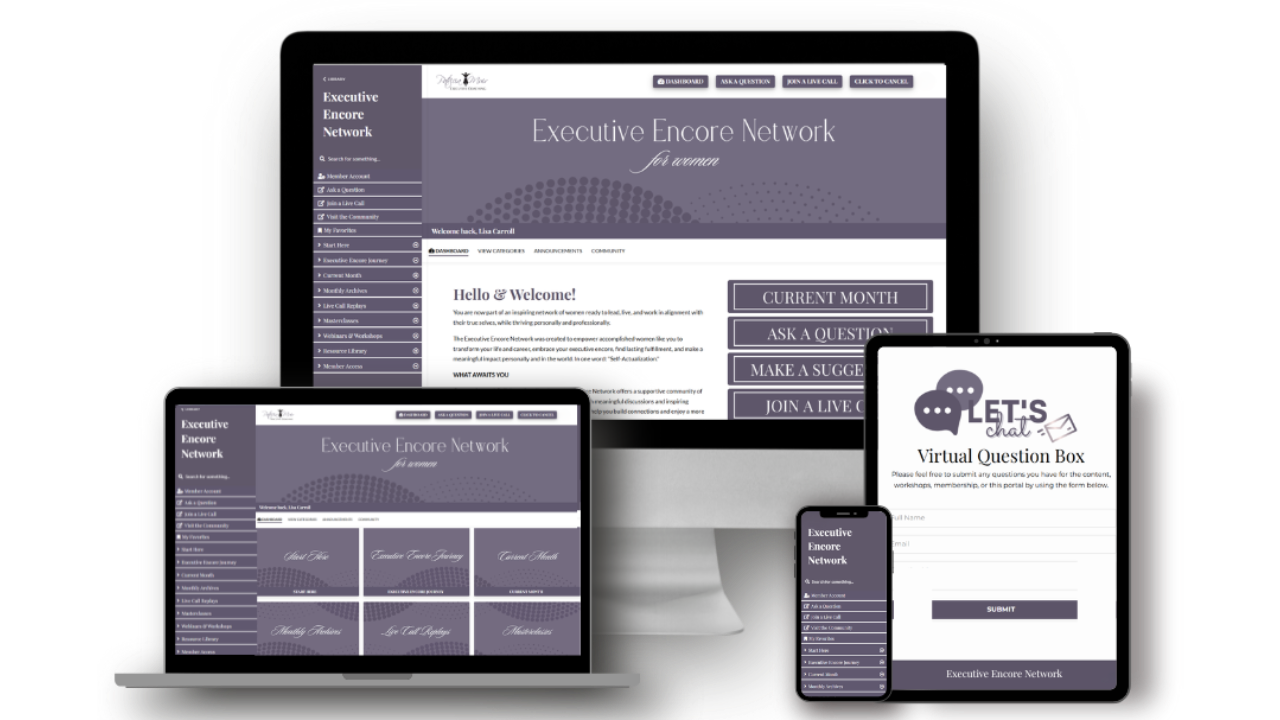
How to Work Towards Better Gender Equity
Sep 30, 2022As a leader in both your personal and professional life, how are you making progress in gender equity?
Despite the progress we have made in bridging the gender gap at work since I began building my career in 1970, I continue to see many barriers that hold women back. There are steps we can continue to take to address, prevent, and mitigate barriers AND we must commit to refining our efforts in working towards better gender equity.
Explore Existing Processes and Practices
When this topic comes up in my work with women entrepreneurs, we explore being intentional in hiring and talent management practices. For example:
- How do you attract strong candidates, both male and female?
- Are your recruiting methods aligned with your intention to maintain gender diversity in your pool of candidates? If you work with recruiters, are you confident that their methods are aligned with your intention to maintain equitable practices?
- Are job descriptions clear, written with gender neutral language void of superlatives that indicate gender preference? What about the description of qualifications?
- How do you determine which applicants you will interview? Do you use a weighted scoring system? Is screening and interviewing done by a gender diverse group? If not, what is your methodology1?
One of my clients has declared a specific measurable goals for gender equity throughout her organization at all levels including staff, independent contractors, leadership team, and board members. As a framework for achieving these goals, the organization has adopted the following best practices in recruiting and selection:
- Reviewing resumes and CVs that have been anonymized by omitting names or any indicators of gender to intentionally increase the number of female applicants who advance in the process.
- Creating interview and selection panels that include balanced gender representation.
- Including assessments in the interview process to uncover candidate bias as an important element of vetting based on qualifications and alignment with the integrity-based culture.
- Bias training goes beyond initial orientation and annual scheduled 're-training'. Bias training is embedded and measured for effectiveness throughout the systems and processes.
- Assessing gender balance with existing complement of staff, management, committees, projects, and the board to ensure that there is a conscious intent to maintain gender balance.
These best practices might seem monumental for an SME. However, the commitment has been made to develop a foundation to support gender equity and diversity as the business scales.
Retain the Best
In a previous post referenced below 2, I wrote about some of the barriers that prevent women from advancing within an organization, including those that exclude women from opportunities to bond with their peers and colleagues. For example, sports activities, community events, incentive programs, or mentoring programs that take place outside the office can lead to greater trust, collaboration, and connections. Even well-meaning wellness programs can be extremely weighted against attracting, including, and motivating women. Do women in your organization have access to these opportunities? Are these opportunities attractive to women? Do women feel that they are welcome and that they belong? When women are treated as equals, both inside and outside the office, mutual support grows.
Day-to-day processes also require review for potential barriers to women. For example, when task segregation occurs—when women are expected to complete less-rewarding work that has been referred to as the pink-collar ghetto 3—they are denied access to more challenging and career advancing work. Are men visible in these roles to authentically demonstrate the balance of gender equity?
Being transparent in the full talent management process from recruiting, selection, hiring and through the promotion processes, including equitable investment in career development, is critical. In a previous blogs and newsletters, I have commented on the inequitable expectation that women pursue their own professional development for which employers benefit for many years without investment.
In the book, Glass Half-Broken: Shattering the Barriers That Still Hold Women Back at Work 4, authors Colleen Ammerman and Boris Groysberg share that women who move up into leadership positions, “tend to be those who have mentors and sponsors earlier in their careers.” They note that, “the most important decisions made about your career usually happen in a room that you’re not in.” Ensuring equitable processes to attract and retain great male and female talent is critical for every organization.
I’d love to hear about your experiences and how you are influencing gender equity in your organization as an entrepreneur, an executive, or a skilled professional.
References and Resources
- Blind Interview, Wikipedia
- Inequities in Talent Management: Understanding Equity vs Equality, Encore Blog - Category "Gender Equity", September 16, 2022
- What is the Pink-Collar Ghetto?, ThoughtCo., Linda Napikoski, Updated March 18, 2017
- Glass Half-Broken: Shattering the Barriers That Still Hold Women Back at Work, Colleen Ammerman and Boris Groysberg
Your Next Steps
- Explore the connections I make with this topic and emotional intelligence. Contact me on LinkedIn. Or click to Get in Touch.
- Receive Maestro's Encore blog in your inbox with VIP content and specific exercises, self-assessments, and self-assignments related to this topic and to accelerate your emotional well-being and resilience. Start with your 90-Day EQ Mini-Plan or the mini workbook Emotions Drive Performance: Triggers from Thinking to Results - Predispositions, Self-Handicapping, Self-Sabotage
-
Explore strategies for finding fulfillment in your work or your executive encore, finding fulfillment after 60. Schedule a 30-minute complimentary call to explore possibilities. On this call, we will get acquainted and discuss what outcome is important to you. I will explain the application process for working with me and how we would work together. By the end of the call, you will have a "quick-win" action plan.
Next Steps
You don’t need to navigate your Executive Encore alone. Discover a better way to take charge of your experience.
- Schedule a 30-Minute Complimentary Executive Encore Call.
Ready to elevate your encore chapter?
- Join the Executive Encore Network for Women, a membership and community of supportive women ready to inspire and uplift. Subscribe to the Sunday Encore to begin your Executive Encore Journey and register for the next Tour to learn more.


